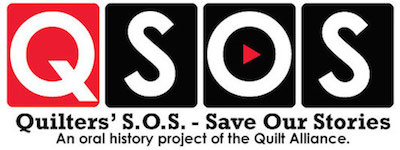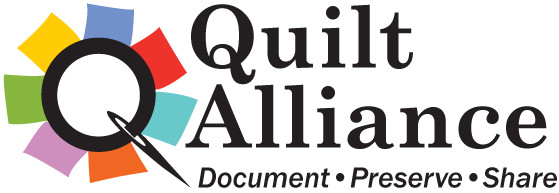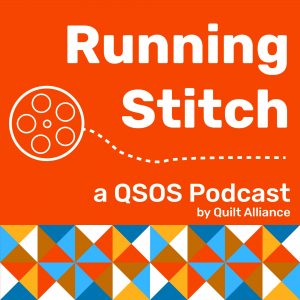
Quilters Save Our Stories oral history project
Quilters Save Our Stories (QSOS) is the largest oral history collection about quiltmakers in the world. These grassroots interviews invite quilters to interview other quilters about their lives, their ideas, and their quilts. Each interview is around 25-45 minutes long, and can be explored online. Our archival partners are the American Folklife Center at the Library of Congress and the Louie B. Nunn Center for Oral History at the University of Kentucky.
The project was co-founded in 1999 by a dedicated group of Quilt Alliance board members and volunteers who identified an extraordinary gap in the quilt world: no one had ever created an oral-history project to capture the history, craft tradition, and personal experiences of America’s quiltmakers. They envisioned QSOS as a grassroots effort and designed the interview process in ways that would make it accessible to interviewers and quiltmakers at all skill levels and backgrounds, allowing them to explore the central question: “if this quilt could talk,” what would it say? Now, twenty-five years later the collection includes over 1,200 recorded interviews with quiltmakers from novices to professionals.
Explore the QSOS archive
You can search and access the more than 1,200 QSOS interviews in our collection by visiting the QSOS site. There, you can search by name, location, keyword, sub-project, and more.
We’re currently in the process of making the audio of every interview available online so you can hear the voice of each quiltmaker. So far, we have about 300 interviews available with audio and an interactive interview index that makes the audio easy to use and explore. The remaining interviews are presented with a written transcript.
Listen to Running Stitch, a QSOS Podcast
Running Stitch, A QSOS Podcast, is hosted by Janneken Smucker, Professor of History at West Chester University. Join us as we explore quilt stories, revealing the inner thoughts, feelings, and motivations of contemporary quiltmakers by drawing from the Quilters S.O.S. — Save Our Stories oral history project. We’ll dig into the QSOS archive to listen to excerpts from past interviews, and bring back interviewees to ask them about what they are working on and thinking about presently.
Getting involved with QSOS
Record an interview – Anyone can record a QSOS interview! We’re currently revising and re-designing the interview process to make it easier, more streamlined, and more relevant to today’s quiltmaking community. If you or your group/guild is interested in conducting QSOS interviews, email qsos@quiltalliance.org or join our QSOS email list for updates like our call for project testers and an announcement once the new guidelines are available.
Volunteer – You can see the previous QSOS manual, as well as a quick-start guide for interviewees and interviewers here. We are also seeking indexers to help create descriptive indexes for QSOS interviews. For more information, email qsos@quiltalliance.org.
Research – QSOS interviews are useful for both scholarly or creative research. If you’re interested in using QSOS for your project, get in touch at qsos@quiltalliance.org!


